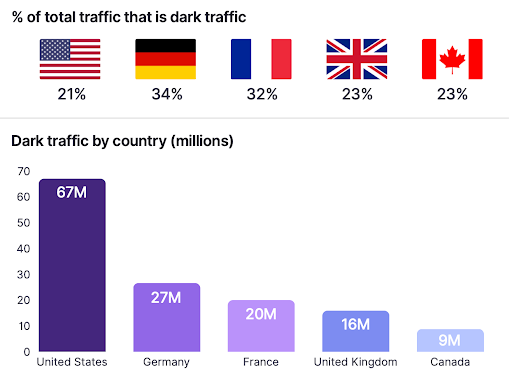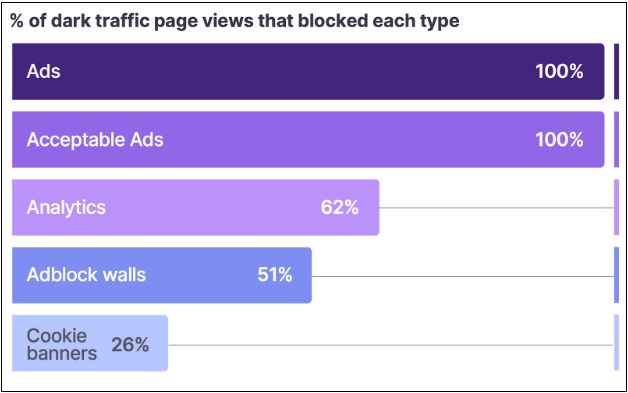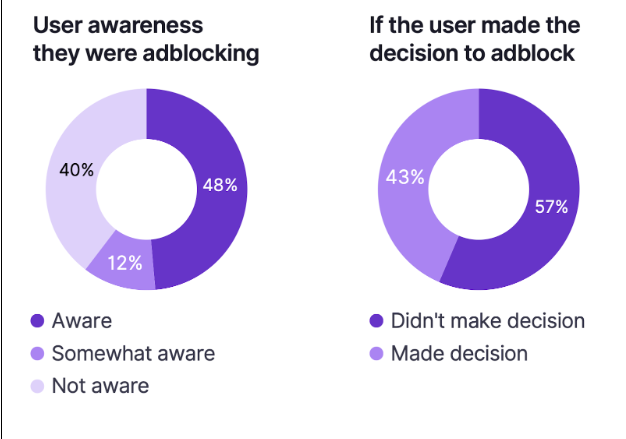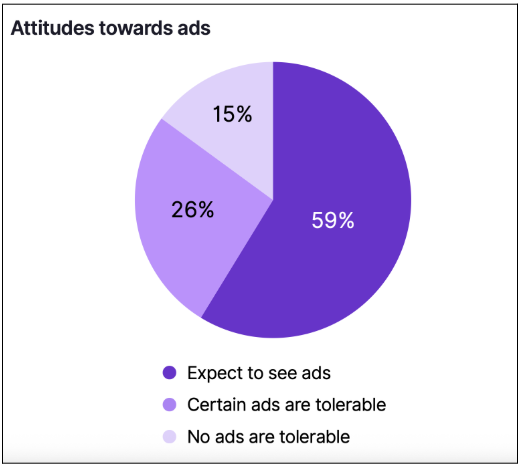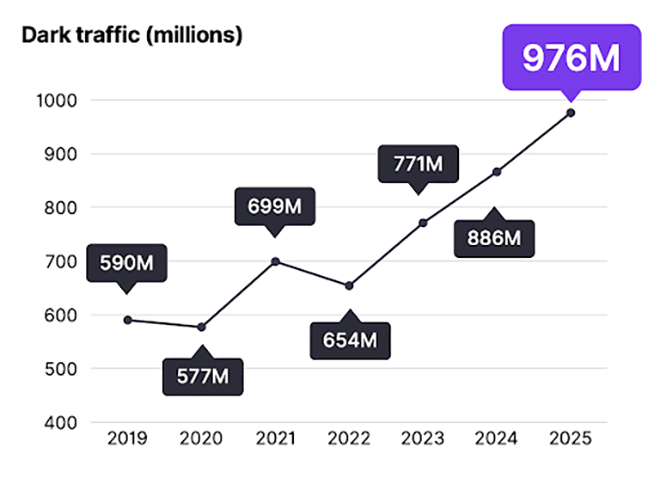
A new dark traffic study from Ad-Shield reveals 976M users are blocking ads without detection—and 57% didn’t choose to.
“We have just lost cabin pressure.”
If you’ve seen Fight Club, you know the line. It signals a crash into reality. A moment when the illusion shatters and everything looks different.
I recently had one of those moments. Not because I found an alter ego, but because I found out we–as an industry–have been thinking about adblocking completely wrong. For years.
Last year, I wrote in AdMonsters about the rise of dark traffic and the threat it poses to publisher business models. At the time, Ad-Shield had just come out of beta to help publishers address this blind spot.
Quick recap: Dark traffic is the share of adblocked visits that are unmeasured and unmonetized. This is caused by a new generation of brutal adblockers that now dominate the ecosystem. Acceptable Ads? Adblock walls? They aren’t compatible here.
Based on internal numbers we were seeing at the time, I estimated this was costing publishers 14–21% of their total revenue. Not just adblocked revenue, total revenue. A hidden audience, consuming content for free, that everyone missed. Ouch.
That was a wake-up call in itself. But, it was just the first. What came next?
Second Wake-up Call
We have now discovered that the majority of dark traffic did not make the decision to block ads. Instead, ad blocking was activated by a third party — IT teams, workplace networks, or public Wi-Fi providers—without the user’s awareness or intention to do so.
Let me repeat that, because the implications are profound: the majority of dark traffic did not make the decision to block ads.
This changes everything. Over the past decade, the industry has approached adblocking through the lens of user choice. The most widely used solutions were developed with this core belief: “we must respect user preferences!”
But, what if users never chose to block ads–and expect to see them? What if they can’t deactivate their ad blocker, even if they wanted to?
It’s time to think differently about adblocking.
Dark Traffic Report
I know what you’re thinking… “show me the receipts!”. Fair enough. It’s time to back up our claims with an evidence-backed study.
Today, we are releasing our first Dark Traffic Report. This quantifies the problem with hard numbers and insights. In fact, it’s the industry’s first-ever report on dark traffic. The result of months’ worth of investigation and research by our team, based on 5BN+ page views and 2,616 surveyed users.
I can now share a few key findings with you:
- 18% of web traffic is dark traffic. 976M users are unmeasured and unmonetized.
- Dark traffic is growing 13% per year. Will hit 1.1 billion users in 2026.
- 57% did not choose to block ads. It’s activated by a third-party, such as workplace IT departments, security software, public WiFi, and enterprise security providers.
Dark traffic now represents 79% of all adblocking traffic. The old world of soft adblockers that permit Acceptable Ads and adblock walls? That’s just 21% now. The remaining 79% comes from brutal adblockers that publishers can’t detect, measure, or monetize.
This isn’t a desktop phenomenon, either. 53% of dark traffic is now mobile, overturning the long-standing assumption that adblocking is limited to laptops and PCs.
It’s also prevalent in Western markets. The US leads with 67 million users causing dark traffic, representing 21% of its total web traffic. Germany follows with 27M (34%), France with 20M (32%), the UK with 16M (23%), and Canada with 9M (23%).
What’s Getting Blocked?
Dark traffic isn’t just blocking ads. It’s creating what we call “a revenue stack blackout.” For the study, we observed the percentage of dark traffic page views that blocked measurement and monetization capabilities that publishers depend on.
Here are the results:
No ads. No analytics. No options.
This is devastating for publishers that depend upon ad revenue as their primary source of income. There is not even a way to “pay off” the adblockers to show ads. They simply do not allow it.
But it doesn’t stop there. Paywalls, regwalls, subscription prompts, affiliate links, and newsletter sign-ups also get blocked frequently. Though, not as often as ads.
Takeaway: Traditional adblock recovery strategies—built for the earlier era of soft adblockers — are completely ineffective against brutal adblockers. Publishers are fighting a 2025 problem with 2015 tools.
Why Dark Traffic Exists
Here’s the insight that flips the entire narrative: 57% of dark traffic never made the decision to block ads. It wasn’t their choice. The proof of just how unconscious this process was? 52% had limited or no awareness that they were even blocking ads.
How can this be possible? Simple. Someone else activated adblocking on their behalf without their knowledge. One major reason for this is IT managers and cybersecurity initiatives.
This isn’t paranoia. It’s policy. The FBI publicly recommended the practice of installing adblockers in 2022. Similar warnings have appeared in security advisories from other agencies and enterprise IT guidelines. And it’s not just shady actors operating within the open programmatic marketplace that is causing the issue.
Google has come under fire after research by Malwarebytes revealed scammers using its Search Ads inventory to impersonate brands, harvest credentials, and distribute malicious software. When the platform at the heart of online advertising is implicated in fraud campaigns, IT teams respond by locking things down.
Other major drivers of dark traffic growth include consumers using VPNs, browsers, or anti-virus software with adblocking built-in and activated–much of the time unknowingly.
Takeaway: Adblocking is no longer just a consumer preference. It’s becoming a cybersecurity best practice. That cultural shift is accelerating the adoption of dark traffic, and the industry is largely unprepared for its consequences.
Why This Matters For Publishers
For a decade, the industry built its adblocking strategy on a single principle: user choice.
“We must respect preferences.”
“Give users lighter, Acceptable Ads.”
“Ask them how they want to compensate us.”
Noble in theory. But, when the user never opted out of ads to begin with, and they can’t even be presented with these options, that framework collapses.
That’s the reality dark traffic exposes. These aren’t hardcore anti-ad activists. These are teachers, accountants, students, professionals — ordinary people browsing on workplace networks, public WiFi, or devices locked down by IT.
And here’s the gut punch: 85% of dark traffic either expects to see ads or finds some formats tolerable. They’re not rejecting ads, they’re just caught in a system that blocks them by default.
Today, traffic loss is the biggest threat to publishers. AI dominates headlines because referral drops from Google and other platforms are visible in dashboards.
Dark traffic flies under the radar precisely because there is no trace of it. There’s no number to track going up or down. Nothing.
What you can’t measure, you can’t recognize as a problem. Instead, you just see the symptoms — slow, steady declines across every referral source. Flat-lining RPMs. Something doesn’t seem right, but you can’t quite put your finger on it.
We’ve published the Dark Traffic Report to help you see the hidden reality for yourself. To get the full picture, grab your copy here.
Now… “Please return your seat backs to their full upright and locked position”.
